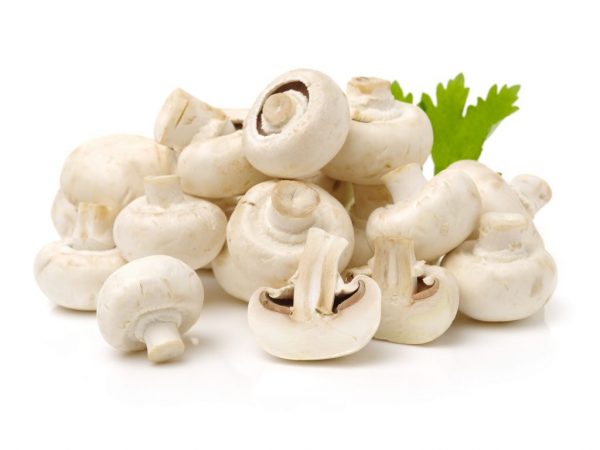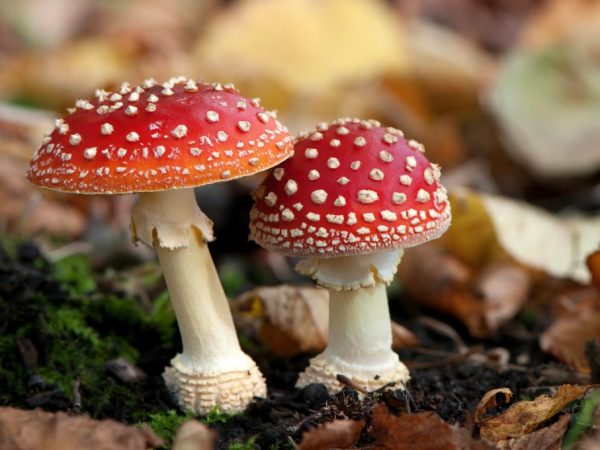What mushrooms are collected in July
A separate and very specific niche in the science of "Biology" is occupied by the kingdom of the Mushrooms. Its representatives are tasty and useful, they are used to create medicines and are used in folk medicine. They differ in the collection period, which for some species can begin as early as April. In order to independently and without looking back to collect them in the mushroom season, it is important to understand how they are useful or harmful, which mushrooms grow in July, and which ones should be looked for in August or autumn.

What mushrooms are collected in July
general characteristics
All mushrooms are divided into 4 categories of edibility: edible (certainly edible), conditionally edible, inedible and poisonous.
Before going into the forest, be sure to study the characteristics of the different types of mushrooms collected, and even better - all types of mushrooms growing in your area, without exception.
Irina Selyutina (Biologist):
In fact, all, with a few exceptions, the collected species belong to the so-called hats, i.e. they have a clear division into a leg and a cap in the fruiting body. If we look at the hat from the bottom (they often write - from the inside), then you can see that it is different for different mushrooms: some have plates located there - these will be lamellar mushrooms, while others have something that resembles a kitchen sponge, for which they are called spongy, but when viewed with magnifying devices, you can see tubes tightly adjacent to each other, which made it possible to give these mushrooms another name - tubular. These are the main types of hymenophore known to us since school times. But there are more of them in nature. In addition to tubular and plate, science has distinguished:
- Smooth: the simplest of all.
- Folded: resembles a lamellar, but only reminds, it is represented by folds of tissue on which the spore-bearing layer is located.
- Thorny: represented by peculiar spines hanging from the lower surface of the cap.
- Labyrinth: it is a modification of the tubular hymenophore.
In addition to the structure of the cap and leg, we are always interested in what will happen if poisonous mushrooms get into the basket? And what are they? What causes poisoning? It is important for the mushroom picker to know that toxins are present in the fruit bodies. This also applies to edible, but overgrown mushrooms, in whose organisms the processes of destruction have already started. That is why it is always recommended to collect young fruiting bodies. Toxins in relation to exposure to high temperatures are divided into:
- resistant: do not collapse under the action of any type of heat treatment (for example, pale toadstool);
- thermolabile: unstable to high temperatures.
According to the degree of toxicity (toxicity), the following groups of mushrooms can be distinguished:
- Food poisoning.
- Influencing the activity of the central nervous system (causing disturbances).
- Deadly poisonous.
Edible wild-growing mushrooms have their counterparts - edible, conditionally edible, inedible and poisonous species, which differ in a number of, often insignificant, features of appearance, place of growth.Therefore, it is important for the mushroom picker to be careful during the "quiet hunt" and not to take mushrooms, the quality of which raises doubts.
Poisonous mushrooms in July will be the same as in June or August, because their mycelium continues to develop, growing new fruiting bodies.
To prepare the harvested product, they adhere to the following rule: mushrooms can be eaten only after heat treatment, which lasts at least 40 minutes.
Poisonous mushrooms lead to severe poisoning if ingested.
Types of july mushrooms
Mushrooms are harvested in large quantities in July.
Edible july mushrooms
The second summer month is considered the beginning of mushroom picking. The amount of the crop will always be proportional to the precipitation and air temperature. It is optimal for crop growth and ranges from + 15 to + 17 ° C.
Edible mushrooms that grow in July include:
- milk mushrooms;
- pechin (champignons);
- value;
- loading;
- chanterelles;
- White mushrooms;
- boletus;
- chanterelles;
- oyster mushrooms;
- funnel-shaped talker;
- Polish mushroom;
- deer mushroom (deer roach).
The long-awaited mushroom rain is heavenly weather for the growth of a variety of mushrooms. The russules appear first, then the chanterelles. They love moisture and bear fruit abundantly after rains. Chanterelles are usually found in coniferous or mixed forests.
Polish mushrooms appear in early July. They settle at the bases of pines or trees. Their season lasts until late autumn. Due to the peculiarities of their external structure, they are often called boletus.
The second mushroom month of summer is the beginning of the development of various types of umbrella mushrooms. They are visible on the edges and clearings, come across under the crowns of trees, in more shaded places. By the way. Some species of umbrella mushrooms belong to the genus Macrolepiota or Umbrella Mushroom, and some to other genera due to specific features. Certain types of umbrellas are delicious. The largest representatives of some species can reach 40 cm in leg length, and 35 cm in diameter of the cap.
Boletus and porcini mushrooms are rare. If you are lucky, in a birch grove you can get on a whole family. Boletus mushrooms are often called boletus, according to the name of the genus to which these mushrooms belong. Since all types of boletus are edible and only differ very slightly from each other, mushroom pickers often do not bother themselves with knowing their specific characteristics.
Inedible july mushrooms

You need to be able to distinguish edible from inedible
Inedible mushrooms are often disguised as edible mushrooms.
Poisonous include:
- gall (hare) mushroom;
- the pig is thin;
- whip (inocybe, fiber);
- death cap;
- fly agaric (panther, red).
Hare, or bilious, mushroom: outwardly similar to white, but has a bitter taste, a black mesh that stands out well on the surface legs and pink pores in the tubular (spongy) hymenophore.
Pryutka: poisonous twin of the honey agaric growing in coniferous or mixed forests under pines and spruces. Representatives of the genus Fiber belongs to the Spiderweb family and is characterized by the presence of a fibrous stem. Some of its species have the alkaloid muscarine present in the pulp, some are hallucinogenic containing psilocybin.
The pig is thin: representatives of the species are similar to the common pig. Since 1993, the slender pig has been included on the territory of the Russian Federation in the list of inedible and poisonous mushrooms. Previously, it was classified as conditionally edible, but studies conducted on the basis of long-term data on poisoning with this type of fungus showed that eating it will lead to a sharp decrease in the content of blood cells in the blood and the occurrence of kidney problems.
Death cap: one of the most poisonous mushrooms. It is often confused with russula, champignon or umbrella mushroom. To understand whether the mushroom is edible or not, they look at the "ball" from which the leg grows. This is what is sometimes called the remnants of a common blanket - a volva that surrounds the tuberous base of the leg and looks like a pouch in appearance.Edible specimens should not have a “skirt” and tuberous thickening immersed in a “pouch” on the stem.
Amanita: panther and red are similar to russules and are mortal danger to humans. Only people with sufficient skills can collect and prepare them. By the way. Unlike their counterparts from the genus Amanita, the blushing fly agaric (m. Pink, m. Gray-pink), like the Caesar mushroom, are edible species.
To avoid problems, only mushrooms are collected in which there is complete confidence. For edibles, sponginess of the cap is characteristic, and for poisonous ones, the lamellarity of the hymenophore. However, one should not forget that lamellar mushrooms are represented by many edible species.
Using
White, boletus, boletus are considered the most useful and tasty. They are used for drying, pickling and frying. At the same time, only porcini mushrooms retain the original color of the fruiting body with any type of heat treatment. But the bobcats (boletus and aspen mushrooms), our ancestors gave the apt name - "black" mushrooms, tk. during processing, their pulp darkens almost to black.
For harvesting for the winter, salting and pickling, milk mushrooms are the best. Before salting, they are soaked in running water for 3 days. This is done in order to remove the specific bitterness that the milky juice present in the pulp gives these mushrooms. If it is impossible to create a continuous flow of water, the water is changed several times a day. Attention! The water must be cold.
Boletus mushrooms are more often used for drying. They are aromatic and give the soup a unique taste. The boletus family grows in sunny glades in a deciduous or mixed forest, near birches. Before drying, the mushrooms are not washed, but simply removed the dirt that has got on their surface. If the spongy mushrooms are soaked, then the lower layer will absorb a large amount of water, as a result of which the pulp will turn into a nasty mass that is no longer suitable for any purpose.
Ryzhiks are considered a delicacy. They only grow near pine trees in coniferous forests. They have a high taste. This representative of lamellar mushrooms got its name due to the bright "sunny" color, which is given to it, as shown by the research of our contemporaries, the substance beta-carotene.
Tubular species are used for salting and freezing. Slippery white caps are difficult to clean, but great taste rewards the effort. These mushrooms grow in mixed forests.
Benefit
Mushrooms, especially the July ones, have many useful qualities and high calorie content. Gourmets call them "forest meat". Their pulp is rich in many micro- and macroelements (potassium, phosphorus, calcium, sodium) and vitamins: carotene, D, C and group B.
Porcini mushrooms contain more protein than beef. For health reasons, it is better to eat them than fried steak because they contain much less unhealthy fats.
Milk mushrooms solve kidney problems, help in solving problems associated with urolithiasis. The active substances of these forest dwellers prevent the formation of urates and aksalats. A specific substance contained in mushrooms - lactrioviolin, prevents Koch sticks from multiplying and prevents the development of tuberculosis, and also helps in the treatment of diseases of bacterial origin.
Chanterelles are a natural antibiotic. The immune system, thanks to the large amount of vitamins A1, B1, zinc and selenium in their composition, begins to work more stably. They are especially beneficial for diabetics. Also, their pulp contains chinomannose - a natural compound that has a detrimental effect on representatives of the Arthropod type and helminths (worms) of various species. It envelops the eggs and dissolves them.
In the pancreas, if it is damaged, the processes of regeneration and recovery are triggered.Chanterelles are a unique plant that does not accumulate radiation, but removes it from the body.
Conclusion
The fruiting bodies of mushrooms contain a huge amount of substances necessary for humans. In terms of protein content, they are close to products of animal origin, and in terms of minerals, fiber - vegetable. In July, many varieties of mushrooms appear, the main thing is not to confuse edible species with poisonous ones.



